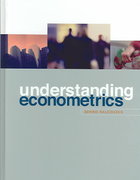Question
Give typed full explanation Don't upload any type of photos Example Article: Price gains in Germany and Spain cooled in November, after months of climbing
Give typed full explanation
Don't upload any type of photos
Example Article:
Price gains in Germany and Spain cooled in November, after months of climbing steadily, as lower energy prices helped to ease the pressure on consumers and businesses in two of Europe's largest economies. Yet even as signals pointed to easing inflation, Christine Lagarde added that looking at the key price drivers like energy, food, and housing, "we do not see the components that would lead me to believe that we have reached peak inflation." Consumer prices across the eurozone jumped in October by a record annual rate of 10.7 percent, according to data reported by the European Commission. In Germany, the annual rate of inflation slipped to 11.3 percent in November, from 11.6 percent the month before. It was the first month since June that price gains had slowed, although they remain at record levels and economists do not expect them to retreat significantly until 2024. the high price of energy has been the main driver of inflation in Germany, but in November, the price of food jumped 21 percent from a year earlier, officials said. Energy prices remained more than a third higher than what they were a year earlier, but higher levels of natural gas storage and a willingness by consumers to cut usage have helped to ease pressure on prices. Spain also showed indications that inflation was slowing, as the rate of consumer price increases in November was 6.6 percent, down from 7.3 percent in OCT, data from the National Statistics Institute showed on Tuesday. The Spanish government cut taxes on energy to help households cope with the rising prices. Last month, it introduced a 3B package aimed to protect the country's most vulnerable population. In Germany, there have been signs of a strengthening economy, with a key indicator of business sentiment among executives rising more than expected in November after months of decline. The improved outlook follows unexpected economic growth in the July-September period. The country has filled its natural gas storage facilities more quickly than expected and is racing to build terminals to import liquefied natural gas. Despite the positive reports, a recession looms. The government is predicting the economy will contract 0.4 percent next year, although a panel of economic advisers recently forecasted that growth will decline by only 0.2 percent.
Explain what would happen to the AS-AD model and MS-MD (liquid preference model of interest rate) model due to this policy (e.g., which curve(s) will shift in which direction and why, what will be the resulting equilibrium aggregate output, aggregate price level, the quantity of money, and interest rate). Include a link to the article you used.
Step by Step Solution
There are 3 Steps involved in it
Step: 1

Get Instant Access to Expert-Tailored Solutions
See step-by-step solutions with expert insights and AI powered tools for academic success
Step: 2

Step: 3

Ace Your Homework with AI
Get the answers you need in no time with our AI-driven, step-by-step assistance
Get Started


